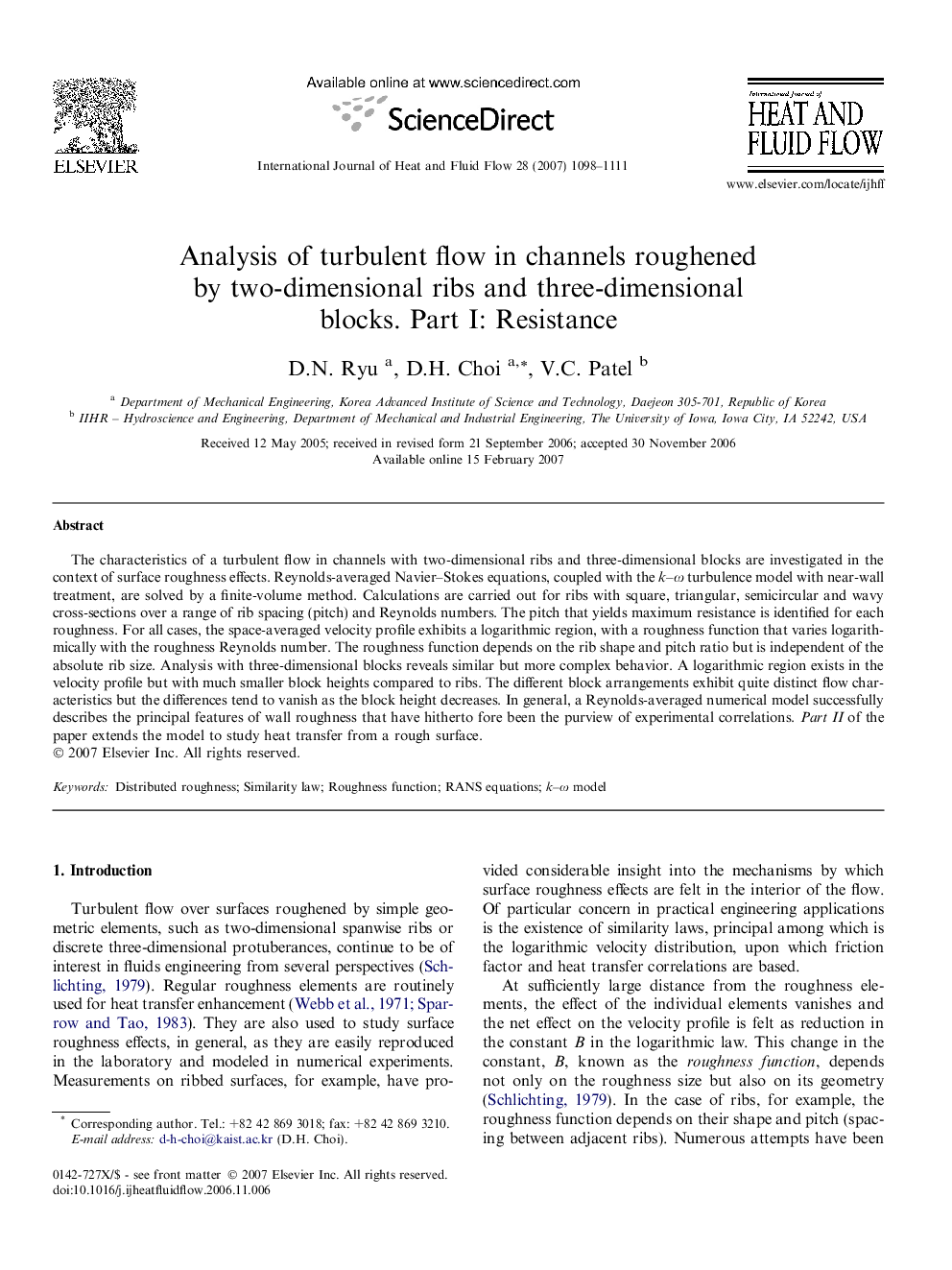| Article ID | Journal | Published Year | Pages | File Type |
|---|---|---|---|---|
| 656018 | International Journal of Heat and Fluid Flow | 2007 | 14 Pages |
The characteristics of a turbulent flow in channels with two-dimensional ribs and three-dimensional blocks are investigated in the context of surface roughness effects. Reynolds-averaged Navier–Stokes equations, coupled with the k–ω turbulence model with near-wall treatment, are solved by a finite-volume method. Calculations are carried out for ribs with square, triangular, semicircular and wavy cross-sections over a range of rib spacing (pitch) and Reynolds numbers. The pitch that yields maximum resistance is identified for each roughness. For all cases, the space-averaged velocity profile exhibits a logarithmic region, with a roughness function that varies logarithmically with the roughness Reynolds number. The roughness function depends on the rib shape and pitch ratio but is independent of the absolute rib size. Analysis with three-dimensional blocks reveals similar but more complex behavior. A logarithmic region exists in the velocity profile but with much smaller block heights compared to ribs. The different block arrangements exhibit quite distinct flow characteristics but the differences tend to vanish as the block height decreases. In general, a Reynolds-averaged numerical model successfully describes the principal features of wall roughness that have hitherto fore been the purview of experimental correlations. Part II of the paper extends the model to study heat transfer from a rough surface.
